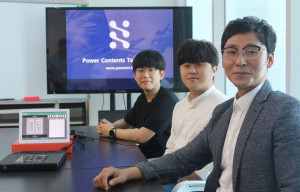The blind have about 360 million people, or about 8% of the world’s population.
According to the National Institutes of Health (NIH), the United States alone has about 1 million legally blind people (as of the end of 2015) and about 3.2 million visual impairments. In 2050, the figure is expected to double to 2 million and 6.95 million, respectively. This warns of the very large health and social consequences of future loss of vision.
 The braille system now used by the visually impaired was designed in 1821 by Louis Braille of France to design a new method for displaying all 26 letters of the alphabet with just six dots. However, there are only 15 million blind people (about 5% of the visually impaired population) who can educate and decipher this braille system worldwide.
The braille system now used by the visually impaired was designed in 1821 by Louis Braille of France to design a new method for displaying all 26 letters of the alphabet with just six dots. However, there are only 15 million blind people (about 5% of the visually impaired population) who can educate and decipher this braille system worldwide.
Even if the visually impaired are trained in the braille system, it is difficult to exchange information with the general public with normal vision. This is why it is difficult to live with the general public.
The problem is that even if the general public wants to help the visually impaired, they do not know how to help them, how to convey information to them, and how to communicate them. If you need to explain those points to a blind person: How would you explain that flying butter- fly looks like? How would you communicate with them? Don’t you think that they also want to email people around the world?
The reality is that among people with disabilities who are alienated from society, there are no means and measures to ensure that even the visually impaired can live with society. Even if the visually impaired are educated in the braille system, there is no way to communicate with the general public.
However, there are tablets for the visually impaired who can not only use the existing braille system to communicate with society, but also express visual images, send and receive emails, use chatting, social media, and internet browsers. Jung-il Jung, a representative of PCT Co., Ltd. in Korea, made a tablet PC for the visually impaired with a general notebook size for 12 years of research.
In addition to converting letters such as alphabets used by ordinary people into Braille, research began with the question of whether visual information could be transmitted as tactile information. He cooperated with Seoul National School for the Blind and finally got a prototype tablet PC with the help of teachers and blind people.
The French novel, The Little Prince (Le Petit Prince, Writer: Antoine Marie Jean-Baptiste Roger de Saint-Exupéry), will also be spoken to them from a tablet PC. In the novel, adults mistake the hat for drawing, but say it is a boa constrictor that swallows an elephant and then digests it. Mr. Jung not only expresses this novel in Braille, but also expresses this figure as a Dot-type image and makes the image move.
The reaction of the blind was explosive. The teachers next to them and their parents also cheered. For the general visually impaired, the touch screen can be connected to the visually impaired tablet and can be viewed together.
It is an innovative product that can be seen by the general public along with the blind, email, chatting, internet, and communication.
▲ PCT(Power Contents Technology) Co.,Ltd.
▲ CEO: Jung-il Jung
▲ www.powerct.kr
▲ Email: ceo@powerct.kr
▲ T: +82-31-734-3123
Mike Choi
Asia Journal
(Los Angeles Times Advertising Supplement)


